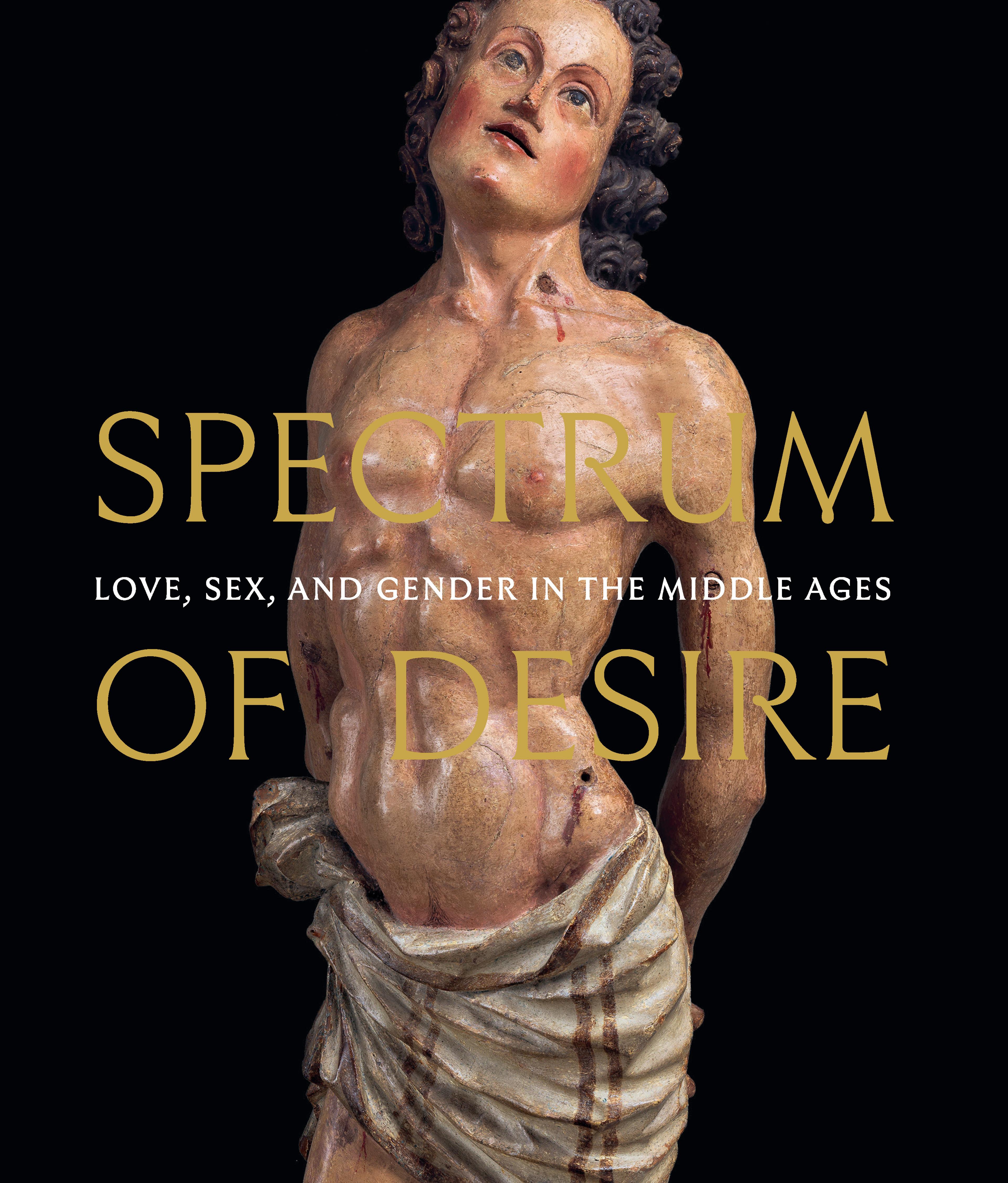African King from an Adoration Group
One of a group of wooden sculptures representing the Adoration of the Magi, this figure initially stood behind an altar in a German church. The New Testament account tells of wise men offering gifts to the infant Jesus, but it gives neither the number of individuals nor their ethnicities. Medieval literature and art, however, depict the Magi as three kings from far corners of the known world, including Africa. Trade routes, diplomatic excursions, and increased contact between Europe and Africa in the medieval period led to more images of people of African descent in art, particularly in scenes of this subject. The Magus’ elegant pose and contemporary attire are reminiscent of a medieval royal courtier. For its original audience, this figure represented an imagined African ruler and a reverent, wise man from a distant world.
These three kings (see 52.83.1–.3) along with a seated Virgin and Child formed the central shrine of a large altarpiece with painted wings. The attenuated, elegant figures and the broad drapery patterns are characteristic of Late Gothic sculpture in Swabia. The Virgin and Child are still in the convent for which the altar was made, and the two painted wings-representing, on the outer sides, the Annunciation and the Visitation and, on the inner sides, the Birth and Dormition of the Virgin-are in the Staatliche Kunsthalle Karlsruhe. One of the wings is dated 1489 and bears the name of the donatrix, Margarethe, daughter of the margrave Karl I of Baden and abbess of Lichtenthal from 1477 until her death in 1496.
These three kings (see 52.83.1–.3) along with a seated Virgin and Child formed the central shrine of a large altarpiece with painted wings. The attenuated, elegant figures and the broad drapery patterns are characteristic of Late Gothic sculpture in Swabia. The Virgin and Child are still in the convent for which the altar was made, and the two painted wings-representing, on the outer sides, the Annunciation and the Visitation and, on the inner sides, the Birth and Dormition of the Virgin-are in the Staatliche Kunsthalle Karlsruhe. One of the wings is dated 1489 and bears the name of the donatrix, Margarethe, daughter of the margrave Karl I of Baden and abbess of Lichtenthal from 1477 until her death in 1496.
Artwork Details
- Title: African King from an Adoration Group
- Date: before 1489
- Geography: Made in Swabia, Germany
- Culture: German
- Medium: Poplar with paint and gilding
- Dimensions: 61 1/2 × 17 × 13 1/4 in., 65 lb. (156.2 × 43.2 × 33.7 cm, 29.5 kg)
- Classification: Sculpture-Wood
- Credit Line: The Cloisters Collection, 1952
- Object Number: 52.83.2
- Curatorial Department: Medieval Art and The Cloisters
More Artwork
Research Resources
The Met provides unparalleled resources for research and welcomes an international community of students and scholars. The Met's Open Access API is where creators and researchers can connect to the The Met collection. Open Access data and public domain images are available for unrestricted commercial and noncommercial use without permission or fee.
To request images under copyright and other restrictions, please use this Image Request form.
Feedback
We continue to research and examine historical and cultural context for objects in The Met collection. If you have comments or questions about this object record, please complete and submit this form. The Museum looks forward to receiving your comments.
